
by admin | May 25, 2021 | Corporate, Web Exclusive

Darul Musannefin(Shibli Academy)Azamgarha
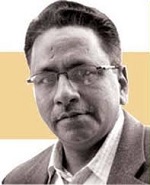
Masoom Moradabadi
By Masoom Moradabadi
Vast majority of us, sadly, know very little about the great academic, literary and research institutions established by our ancestors in this great country of ours. Neither we know about the contributions and services of these institutions nor do we have any idea of the crisis they are facing. One of such prestigious institutions, of which our community can be rightly proud of, is Darul Musannefin, Azamgarh, also known as Shibli Academy.
This great institution completed its centenary only a couple of years ago. If I tell you that this esteemed academic and research academy is struggling for its survival, perhaps you will not believe me. But this is a painful truth that this institution is facing financial difficulties of such magnitude that it is unable to pay salaries to its employees. Someone has forwarded me a letter written by its Director Professor Ishtiaq Zilli. After reading it my immediate reaction was that someone is trying to play a trick and wants to defame a prestigious institution. Several fake items with similar contents keep circulating on social media. But when I found out it to be genuine, I was deeply saddened. I am one of those who have personally benefitted from this institution. Its prestigious and authentic journal, Marif, has played an important role in my mental formation. But as someone with no power and authority, I am unable to do anything more than writing a few lines to help and support this academic institution.
Therefore, through this imperfect writing of mine, I am trying to introduce to you the extraordinary services of this institution in the fields of academics, literature and research, though you know about it more than I do.
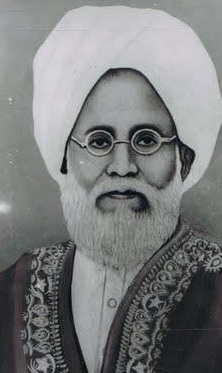
Allama Shibli Nomani
Is there any intellectual in whole of South Asia who has succeeded in his career without benefiting from the enduring academic contribution of Darul Musannefin? There was a time when this was the only institution that deserved to be acknowledged as a ‘think thank’. How do you feel knowing that this great institution, that has provided a seminal service by compiling the magnificent history of Muslims, is not able even to pay salaries to its staff and is looking towards you with a silent question?
Let’s now turn to the open letter written, 6 June 2020, to the well-wishers of the community by Darul Musannefin’s director Dr Ishtiaq Zilli. He writes: ‘I am sorry to trouble you in these difficult times. Extreme helplessness has forced me to take this route. You are aware of the financial difficulties being faced by Darul Musanniffeen. During the last few days, due to several reasons, these difficulties have intensified. The lockdown has made the situation more serious. Half of April has passed. We have somehow managed to pay salaries to our staff. Only Allah knows what lies ahead. We need your prayers and advice in this regard.’ [Translated version not original letter]
From the letter of the Director of Darul Musannefin one can easily gauge the seriousness of the financial crisis that this institution is facing. [Bear in mind that] This is the very institution that has fostered our intellectual traditions and whose contributions have been acknowledged by several bigwigs. This is the very institution that a learned person like Maulana Abul Kalam Azad held close to his heart and that had produced a rare Perl like Allama Syed Suleman Nadvi. Why is our Milli self-respect not reawakening even when this academy is struggling for its survival?
What is it if not a communal tragedy that the community in which individuals spend crores of rupees to satisfy their false sense of self-pride and self-importance, in which wealth is wasted like water on weddings, in which money is lavishly spent to build massive houses and everything is put at stake to satisfy a false sense of ego but an institution that serves as the guardian of its cultural and academic heritage is having to beg for help for its survival?
The fact is that the manner in which our community has turned its back on its cultural and academic heritage is a glaring proof of our collective insensitivity. Darul Musannefin is our national and milli heritage that we should be rightly proud of.
Not only has this institution done a great service by compiling the history of Muslims but has also reawakened in them a sense of being immensely culturally and historically rich. No matter how many conspiracies are hatched and executed to erase their very existence and the history of their services to their motherland, the facts shall remain facts and the undeniable fact is that no community has enriched the history and culture of this country as much as has been done by the Muslims.
Ideally some altruist should have come forward and helped this institution in a manner that the left hand would not have known what the right hand had done but, sadly, things have come to such a pass that in order to be able to pay the salaries of his staff, its director had to issue a public appeal and even after ten days no feasible arrangement has yet been suggested.
Maulana Azad may be regarded as one of the founders of this institution. It was him who had first proposed, in his daily Al-Hilal, the idea for the establishment of this institution. Giving the heading to his proposal as Ikhwanussafa he had appealed to the educated and conscientious circles to help and cooperate in this project. Even after its establishment, he remained interested in its affairs. The manner in which he continued to help it after the independence may be judged from the letter he had written on 23 November 1954, four years before his death, requesting the government to continue helping this institution. He wrote:
‘My dear Dr Katju,
‘Darul Musannefin Azamgarh, also known as Shibli Academy, used to get an annual aid of Rs 2,160 from Bhopal state that continued to be paid after its integration [with the union of India] because it was recognised in the conditions of the integration that the grants being given by the state for academic and literary programmes would continue as usual, but, abruptly, this year Shibli Academy did not receive its grant. Thereupon they wrote to the government of Bhopal. From Bhopal they received a reply saying that the issue has been referred to Central government where it is being reviewed.
‘I am forwarding to you the documents related to this matter along with this letter. I would be grateful if you could enquire about further developments in this regard. Shibli Academy is country’s big academy and has been providing invaluable literary services. If the grant from Bhopal is stopped this will harm it hugely. In addition, this will also violate the agreement that we had signed at the time of Bhopal’s integration.’
Darul Musannefin was established in 1914 and was the last great achievement of Allama Shibli Nomani. Having faced several ups and downs since its birth this institution has successfully covered a long and purposeful journey spanning over a century. This is the only institution that — maintaing a distinct style, intellectual integrity and constructive point of view — has given a huge and invaluable treasure of non-fictional prose to Urdu literature and fulfilled the dream of its founders.
The selflessness of the inheritors of the legacy of Allama Shibli, their sacrifices, their dedication to research and academic work and devotion to their mission has served as necessary provisions in this long journey covered by them. After the death of Shibli Nomani, they, under the leadership of Shibli’s great pupil, Maulana Syed Sulaiman Nadvai, took up this journey, notwithstanding the lack of resources. For the formal construction and progress of this institution they did not get any help from the government or a business tycoon family. They spent their own limited and scares resources for this great task. They were fortunate to have been joined by a team of writers and scholars who had the ability to make their ends meet with very little remuneration. But we are not living in that age. In today’s world, for the survival of an institution regular and dependable income is a must so that it does not have to face such a crisis and beg for help and it does not behove to the scholars to have to make such appeals.
Therefore, this is extremely vital that the well-off people in the community sit together and brainstorm to find means for a regular income of Darul Musannefin. If our research and academic institutions fall victim to such a financial crisis this would be millat’s great loss.
————————————————————————————————–
Masoom Moradabadi is a senior journalist and has authored several books.
Translated by Urdu Media Monitor.Com. This article has appeared on many Urdu portals.

by admin | May 25, 2021 | Web Exclusive

‘Rashtriya Ekta Adhiveshan
Lucknow: ‘Rashtriya Ekta Adhiveshan’ organised under the aegis of ‘Rashtriya Shia Sufi Sangh’, prominent Muslim religious leaders like Maulana Kalbe Jawwad (Shia leader), Akhtar ul Wasey (VC, Maulana Abul Kalam Azad National University), Umair Iliyasi (President, All India Imam Organisations), Sarwar Chisti (Ajmer Shareif) etc. condemned terrorism and held Pakistan responsible for the same. They hailed Prime Minister’s statement that Kashmir is ours and Kashmiris too. A two minutes silence was also observed by the participants in memory of the CRPF Martyrs.
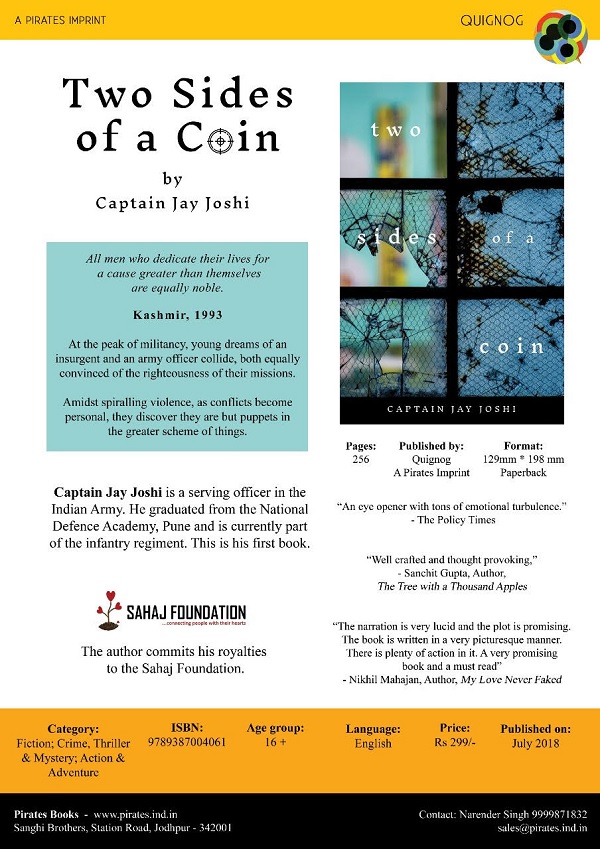
by admin | May 25, 2021 | Books, Web Exclusive

Quignog, an imprint of Pirates has come up with a fictitious book ‘
Two Sides of A Coin’ that delves deep into the conscience of two individuals, the first being an army officer and other being a militant. Their dreams rest on their perceived realities of life.
The author has been innovatively daring in bringing to the fore the psychological state of two different individuals both convinced with the righteousness of their missions.
As the plot thickens, the tale brings forth some harsh realities about people who interpret missions of their life as divine principles, but later on realize that they are mere puppets to the schemes conspired in the higher echelons.
The author stresses upon the fact that there is a thin line between a terrorist and an insurgent, and in the context of Kashmir, the line gets even thinner.
Moreover, the narrative vividly describes the ravishing backdrop of Kashmir with references to natural landscape of the state, making it a compelling read.
The author has endeavoured to blend his personal experience and knowledge into a gripping tale of individuals of different backgrounds, with references to lifestyles of servicemen and local residents of the province.
‘Two Sides of A Coin’ is informative, insightful and a must-read master fiction piece on Kashmir, available in
Amazon and prominent book stores of India.
The author of ‘Two Sides of A Coin’ is a serving Officer in the Indian Army, commissioned in the Infantry regiment. He has done his graduation from the National Defence Academy and Post- Graduation from the Indian Military Academy.
Educated at Mumbai, US and Gujarat, the author, inspired by his inherent understanding has written his book, titled, ‘Two Sides of a Coin’.
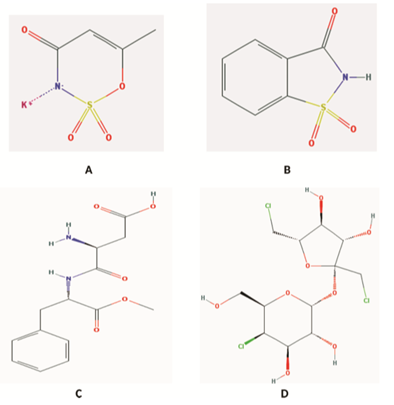
by admin | May 25, 2021 | Web Exclusive
Sugar or glucose is the most important fuel of the human body. It undergoes numerous biochemical reactions at various levels to steadily serve its purpose as the energy provider. These reactions are controlled by enzymes who ensure that the right things happen at the proper time and the correct place. One such very important reaction is that of Glycosylation. This process of Glycosylation is a type of post-translational protein modification which is necessary for the proper functioning of mature protein molecules. Through Glycosylation, the sugar molecules get attached to the target molecules at defined sites. This process is ATP-dependent and is mediated by appropriate enzymes. This process, however, will go haywire if the involvement of the enzyme is absent and will result in impaired functioning of the biomolecules. This enzyme devoid version of Glycosylation is known as ‘Glycation’.
Glycation occurs ordinarily in the body and its end product known as the Advanced Glycation End Products (AGEs) keeps on piling up in the body system over time. Conditions like Hyperglycemia may accelerate the AGEs generation. These AGEs have destructive effect as they may coagulate in the blood capillaries.

(Source: alivebynature.com)
In order to minimize the probability of developing hyperglycemic conditions, a variety of different sugar substitutes are used. A research study led by Dr. Ahmad Ali, a molecular biologist, and biochemist at Department of Life Science, University of Mumbai, tried to investigate whether these substitutes can also contribute to Glycation since they have functional groups similar to that of the sugar molecule: Carbonyl groups in combination with Nitrogen, Sulfur and/or Chlorinated sucrose.
The team tested five artificial sweeteners (Saccharin, Aspartame, Sucralose, Neotame, and Acesulfame-K) on an in vitro model of glucose-mediated protein Glycation. In the model, Amadori (an intermediate in the production of AGE) and AGEs formed as a consequence of the interaction between carbonyl groups of the reducing sugars and amino groups of various macromolecules through Glycation were examined.

A. Acesulfame-K, B. Saccharin, C. Aspartame, D. Sucralose
(Source: Ali et al. 2017)
Various methods were used to decipher the glycating/anti-glycating potential of the artificial sweeteners.
One method was the incubation of the artificial sweeteners with glucose & lysine mixture to quantitively measure Glycation through a spectrophotometer at 420 nm with the browning of the solution.
The carbonyl content (an indicator of Glycation) were measured using DNPH (2,4-Dinitrophenylhydrazine) method in which carbonyl compounds react with DNPH to form a stable colored hydrazone derivative that can be quantitatively estimated using a spectrophotometer.
AGEs were also estimated in terms of fluorescence through Cary Eclipse Fluorescence Spectrophotometer.
After removing the unreacted glucose and dialyzing the sample using phosphate buffer the Glycated proteins were estimated using SDS PAGE.
It was found that none of the artificial sweeteners induces Glycation and, in fact, Acesulfame-K reduced the Amadori product, carbonyl content and the total AGEs across the methods. Separate experiments were performed of in vitro Glycation of BSA (Bovine serum albumin) with glucose and Acesulfame-K where it was found that Acesulfame-K reduces the aggregation of Glycated BSA and reverses the Glycation-induced DNA damage as demonstrated by the double-stranded DNA (pBR322) marker. All these results invariably pointed towards the anti-glycating properties of Acesulfame-K.
Further studies that explore the role of functional groups and their interactions with specific characterized AGE products will help in revealing the exact mechanisms behind these findings.
Given the damage caused by Glycation in not just diabetes but also in other deadly diseases like Alzheimer’s, Parkinson’s, Atherosclerosis etc., the discovery of any anti-glycating compound is vitally important and that if it is a sugar substitute meaning it will reduce calorie intake as well it becomes even more crucial and life-saving.
The article originally published at https://www.biomall.in/blog/
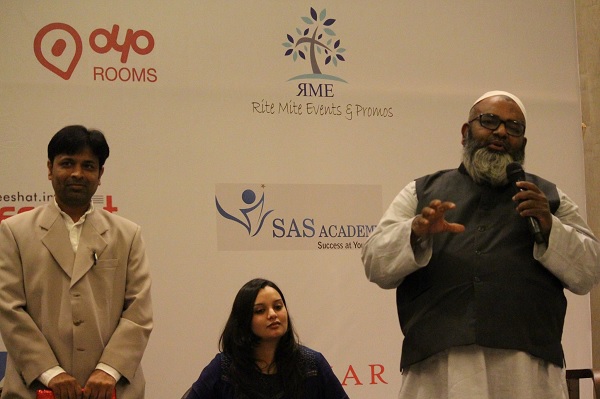
by admin | May 25, 2021 | B-School, Web Exclusive

Anees Kutty of Evergreen Education Foundation speaking at Hotel Conrad in Pune
A large number of academicians participated in the meet intiated by Anees Kutty of Ever Green Foundation
PUNE: The great grandson of Mahatma Gandhi and acclaimed author Tushar Gandhi on Sunday launched a scathing attack on the education system in the country and said that it was creating the dumbest generation in the history of the nation. Painting an alarming picture about the downward slide in education, he said, “ We are trying to turn students into robots who are regimented in their thinking. Do we really need that?” Tushar Gandhi questioned while addressing a mammoth gathering of over 150 educationists from all over country during the National Edu-StartUp Conference 2016 organized by educationist Anees Kutty of Evergreen Education Foundation at Hotel Conrad in Pune on Sunday.
Gandhi who was the keynote speaker further lambasted higher ( university ) education in the country terming it as commodified. “ Attempts are being made for complete centralization of education and it should not be done .
Education has to be customised according to the needs of the people in a truly democractic way as espoused by Mahatma Gandhi. It must be liberating and not aimed at making slaves ,” he said.
Gandhi further added “ The education system is controlled by insensitive bureaucrats and illiterate politicians who have no concern for human values and ethics. Hence, the education being imparted under their supervision has not only dumbed the old and new generation but has become a factory of producing slaves looking out for jobs in the market ,” he added.
Taking a dig at the engineers, Gandhi said that the time has come for promoting liberal arts as an important area of education. “ Liberal Arts and Humanities provides a solid base for relearning and becoming rationalist thinking beings. An engineer is required to be thinking for the society and not a factory slave ,” he suggested.
Evergreen Education Foundation President Anees Kutty outlined the core agenda of the conference and said that the conference was at creating a uniform integrated curriculum from Kashmir to Kanniyakumari based on the cardinal principles of Creativity and Experiential Learning to the core Academic Curriculum.
He further said “ Our aim is to revolutionize education in India by providing worthwhile informative sessions for educators, educationists and students attending the conference and more importantly following it up with Practical methods. The conference also hopes to promote those start-ups that are completely and fully focused on improving the education sector through innovation ,” he added. The utcome of the conference will be reduced into a handbook and sent to HRD Ministry.
Amongst the other distinguished speakers were Vishwas Mahajan,Manjiri Desai, S G Suryah, Allan Das, Kirthi Jaykumar and Akash Chandran. Former Minister Shashi Tharoor addressed the gatheing via webinar.
Evergreen Education Foundation was instituted in the year 1997 under the aegis of Mr. P Mohammed Kutty whose vision was to provide young students from the minority and backward communities’ quality education. For this his eldest son Anees Kutty, a Professor of Mathematics began to work with him. By then Mr. Anees Kutty had established himself as a Math wizard in Pune and was coaching students for the National Defence Academy, India’s most prestigious academy for Defence Coaching in Pune.
It was at this point that both father and son decided that it was time to “Reach the Unreached” sections of society. It was in pursuance of this dream that both Father and son decided to work for the community and for the underprivileged sections of society. In furtherance to this they instituted a small school in Wagholi area in Pune for Muslim students. They work for orphans and students. The duo has since helped hundreds of students from the backward communities by providing them access to quality education and coaching.

by admin | May 25, 2021 | C S R, Corporate, Corporate Jobs, Employment, Markets, Technology, Web Exclusive
 New Delhi, (IANS) : Google India on Tuesday launched the second edition of the “Web Rangers” contest, saying it was an effort to promote and educate the youth about staying smart, safe and savvy online.
New Delhi, (IANS) : Google India on Tuesday launched the second edition of the “Web Rangers” contest, saying it was an effort to promote and educate the youth about staying smart, safe and savvy online.
The “Web Rangers” contest is open to students across the country in the 10-17 year age group.
“The ‘Web Rangers’ contest is a platform to enable young adults to become good digital citizens and empower their friends and families to have a safer and meaningful digital experience,” said Sunita Mohanty, Director (Trust and Safety) at Google.
The competition aims to encourage young people in schools and communities to highlight the importance of internet safety and being good digital citizens.
“Students across the country are invited to create, innovate and submit their creative ideas in various categories in the form of entries ranging from a comprehensive internet safety campaign, to a project involving a video, website, app or even design a poster to educate and spread awareness around digital safety,” Mohanty added.









